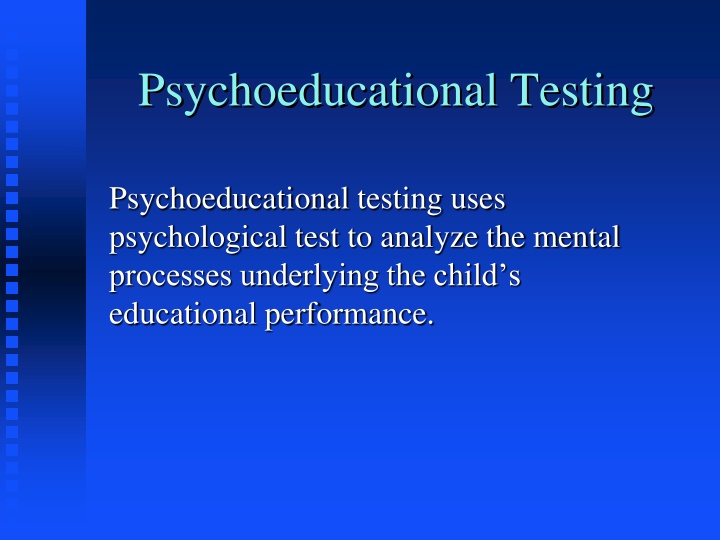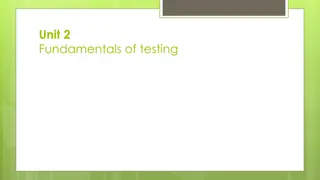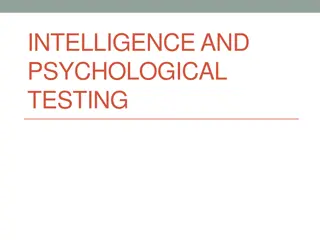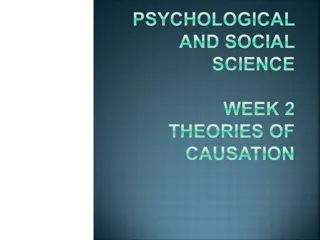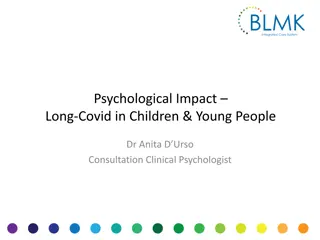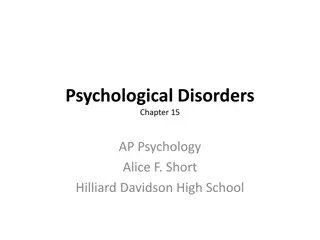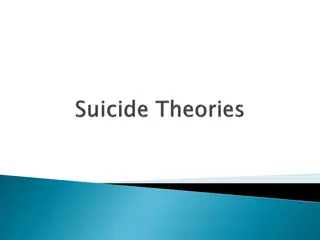Psychoeducational Testing: Psychological Analysis of Educational Performance
Psychoeducational testing involves utilizing psychological tests to evaluate the cognitive processes affecting a child's academic abilities. Various tests like Woodcock Johnson III, DAS, and K-ABC II are used for cognitive and clinical assessments, learning disability evaluations, educational planning, and more. The tests are based on theoretical models like CHC theory and Luria's work on mental processing, with strong psychometric properties and specific sub-tests to assess different abilities like memory, learning, and planning.
Download Presentation

Please find below an Image/Link to download the presentation.
The content on the website is provided AS IS for your information and personal use only. It may not be sold, licensed, or shared on other websites without obtaining consent from the author.If you encounter any issues during the download, it is possible that the publisher has removed the file from their server.
You are allowed to download the files provided on this website for personal or commercial use, subject to the condition that they are used lawfully. All files are the property of their respective owners.
The content on the website is provided AS IS for your information and personal use only. It may not be sold, licensed, or shared on other websites without obtaining consent from the author.
E N D
Presentation Transcript
Psychoeducational Testing Psychoeducational testing uses psychological test to analyze the mental processes underlying the child s educational performance.
Psychoeducational Tests Woodcock Johnson III (WJ III) Differential Ability Scale (DAS) Kaufman Assessment Battery for Children (K-ABC II)
Kaufman Assessment Battery for Children II (K-ABC II) Alan and Nadeen Kaufman K-ABC 1983 KABC II - 2004 Was 2 years to 12 , revised 3 - 18 Core tests 25 to 55 minutes Luria model Supplementary 35 to 70 minutes - CHC
Purpose of test Cognitive assessment Psychological and clinical assessment Psychoeducational evaluation of learning disabilities (LD and ADHD) Educational planning and placement Minority group assessment culture fair Preschool assessment Neuropsychological assessment Research
Theoretical base Dual Cognitive Theoretical Base Neuropsychology Cattell s theory (CHC) general intelligence crystalized intelligence = achievement fluid intelligence = mental processing specific intelligences
Mental processing neuropsychological model Based on Luria s work on cognitive functioning Sequential = serialist Simultaneous = parallel (holist)
Psychometric properties Strong on: factor structure norms reliability validity (internal and external) (some floor and ceiling effects)
19 sub tests (total possible all ages) 4 or 5 Indexes mean of 100, standard deviation of 15 Sequential processing (L) Simultaneous processing (L) Learning ability (L) Planning ability (L) Crystallized ability (CHC)
Sequential Processing (short term memory) Hand movement Number recall Word order
Simultaneous processing (visual processing) Face recognition Gestalt closure Triangles Rover Pattern reasoning Block counting Conceptual thinking
Planning Ability (fluid reasoning) Pattern recognition Story completion
Learning Ability (long term storage and retrieval) Atlantis Atlantis Delayed Rebus Rebus Delayed
Crystallized Ability (knowledge) Expressive vocabulary Riddles Verbal knowledge
